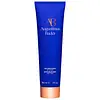What's inside
What's inside
 Key Ingredients
Key Ingredients

 Benefits
Benefits

 Concerns
Concerns

 Ingredients Side-by-side
Ingredients Side-by-side

Aloe Barbadensis Leaf Juice
Skin ConditioningCetearyl Alcohol
EmollientGlycerin
HumectantCoco-Caprylate
EmollientBehentrimonium Chloride
PreservativePolyquaternium-10
Polyquaternium-7
Argania Spinosa Kernel Oil
EmollientMentha Piperita Oil
MaskingPanthenol
Skin ConditioningMentha Arvensis Callus Lysate
AntioxidantHydrolyzed Quinoa
Skin ConditioningLinum Usitatissimum Seed Oil
PerfumingHelianthus Annuus Seed Oil
EmollientSqualane
EmollientSimmondsia Chinensis Seed Oil
EmollientMacadamia Ternifolia Seed Oil
EmollientUrtica Dioica Leaf Extract
Skin ConditioningEquisetum Arvense Leaf Extract
AstringentHibiscus Sabdariffa Flower Extract
Skin ConditioningHylocereus Undatus Fruit Extract
Skin ConditioningChamomilla Recutita Flower Extract
MaskingRosmarinus Officinalis Leaf Extract
AntimicrobialSerenoa Serrulata Fruit Extract
Skin ConditioningPentylene Glycol
Skin ConditioningCaprylyl Glycol
EmollientEthylhexylglycerin
Skin ConditioningCitric Acid
BufferingAloe Barbadensis Leaf Juice, Cetearyl Alcohol, Glycerin, Coco-Caprylate, Behentrimonium Chloride, Polyquaternium-10, Polyquaternium-7, Argania Spinosa Kernel Oil, Mentha Piperita Oil, Panthenol, Mentha Arvensis Callus Lysate, Hydrolyzed Quinoa, Linum Usitatissimum Seed Oil, Helianthus Annuus Seed Oil, Squalane, Simmondsia Chinensis Seed Oil, Macadamia Ternifolia Seed Oil, Urtica Dioica Leaf Extract, Equisetum Arvense Leaf Extract, Hibiscus Sabdariffa Flower Extract, Hylocereus Undatus Fruit Extract, Chamomilla Recutita Flower Extract, Rosmarinus Officinalis Leaf Extract, Serenoa Serrulata Fruit Extract, Pentylene Glycol, Caprylyl Glycol, Ethylhexylglycerin, Citric Acid
Water
Skin ConditioningDistearoylethyl Dimonium Chloride
Cetearyl Alcohol
EmollientGlycerin
HumectantErythritol
HumectantPanthenol
Skin ConditioningCetyl Alcohol
EmollientRicinus Communis Seed Oil
MaskingSaccharide Isomerate
HumectantPotassium Sorbate
PreservativeCitric Acid
BufferingCocos Nucifera Oil
MaskingHydrolyzed Vegetable Protein
Skin ConditioningAvena Sativa Kernel Oil
Skin ConditioningPunica Granatum Seed Oil
EmollientSodium Benzoate
MaskingSodium Phytate
Maltodextrin
AbsorbentHydrolyzed Rice Protein
Skin ConditioningSodium Hydroxide
BufferingLepidium Meyenii Root Extract
Skin ConditioningNasturtium Officinale Extract
PerfumingTropaeolum Majus Extract
AntimicrobialCamellia Sinensis Leaf Extract
AntimicrobialHydrogenated Lecithin
EmulsifyingTocopheryl Acetate
AntioxidantXanthan Gum
EmulsifyingSodium Citrate
BufferingTocopherol
AntioxidantSorbic Acid
PreservativeAlanyl Glutamine
HumectantArginine
MaskingOligopeptide-177
Sodium Chloride
MaskingPhenylalanine
MaskingSisymbrium Irio Seed Oil
MaskingWater, Distearoylethyl Dimonium Chloride, Cetearyl Alcohol, Glycerin, Erythritol, Panthenol, Cetyl Alcohol, Ricinus Communis Seed Oil, Saccharide Isomerate, Potassium Sorbate, Citric Acid, Cocos Nucifera Oil, Hydrolyzed Vegetable Protein, Avena Sativa Kernel Oil, Punica Granatum Seed Oil, Sodium Benzoate, Sodium Phytate, Maltodextrin, Hydrolyzed Rice Protein, Sodium Hydroxide, Lepidium Meyenii Root Extract, Nasturtium Officinale Extract, Tropaeolum Majus Extract, Camellia Sinensis Leaf Extract, Hydrogenated Lecithin, Tocopheryl Acetate, Xanthan Gum, Sodium Citrate, Tocopherol, Sorbic Acid, Alanyl Glutamine, Arginine, Oligopeptide-177, Sodium Chloride, Phenylalanine, Sisymbrium Irio Seed Oil
 Reviews
Reviews

Ingredients Explained
These ingredients are found in both products.
Ingredients higher up in an ingredient list are typically present in a larger amount.
Cetearyl alcohol is a mixture of two fatty alcohols: cetyl alcohol and stearyl alcohol. It is mainly used as an emulsifier. Emulsifiers help prevent the separation of oils and products. Due to its composition, it can also be used to thicken a product or help create foam.
Cetearyl alcohol is an emollient. Emollients help soothe and hydrate the skin by trapping moisture.
Studies show Cetearyl alcohol is non-toxic and non-irritating. The FDA allows products labeled "alcohol-free" to have fatty alcohols.
This ingredient is usually derived from plant oils such as palm, vegetable, or coconut oils. There is debate on whether this ingredient will cause acne.
Due to the fatty acid base, this ingredient may not be Malassezia folliculitis safe.
Learn more about Cetearyl AlcoholCitric Acid is an alpha hydroxy acid (AHA) naturally found in citrus fruits like oranges, lemons, and limes.
Like other AHAs, citric acid can exfoliate skin by breaking down the bonds that hold dead skin cells together. This helps reveal smoother and brighter skin underneath.
However, this exfoliating effect only happens at high concentrations (20%) which can be hard to find in cosmetic products.
Due to this, citric acid is usually included in small amounts as a pH adjuster. This helps keep products slightly more acidic and compatible with skin's natural pH.
In skincare formulas, citric acid can:
While it can provide some skin benefits, research shows lactic acid and glycolic acid are generally more effective and less irritating exfoliants.
Most citric acid used in skincare today is made by fermenting sugars (usually from molasses). This synthetic version is identical to the natural citrus form but easier to stabilize and use in formulations.
Read more about some other popular AHA's here:
Learn more about Citric AcidGlycerin is already naturally found in your skin. It helps moisturize and protect your skin.
A study from 2016 found glycerin to be more effective as a humectant than AHAs and hyaluronic acid.
As a humectant, it helps the skin stay hydrated by pulling moisture to your skin. The low molecular weight of glycerin allows it to pull moisture into the deeper layers of your skin.
Hydrated skin improves your skin barrier; Your skin barrier helps protect against irritants and bacteria.
Glycerin has also been found to have antimicrobial and antiviral properties. Due to these properties, glycerin is often used in wound and burn treatments.
In cosmetics, glycerin is usually derived from plants such as soybean or palm. However, it can also be sourced from animals, such as tallow or animal fat.
This ingredient is organic, colorless, odorless, and non-toxic.
Glycerin is the name for this ingredient in American English. British English uses Glycerol/Glycerine.
Learn more about GlycerinPanthenol is a common ingredient that helps hydrate and soothe the skin. It is found naturally in our skin and hair.
There are two forms of panthenol: D and L.
D-panthenol is also known as dexpanthenol. Most cosmetics use dexpanthenol or a mixture of D and L-panthenol.
Panthenol is famous due to its ability to go deeper into the skin's layers. Using this ingredient has numerous pros (and no cons):
Like hyaluronic acid, panthenol is a humectant. Humectants are able to bind and hold large amounts of water to keep skin hydrated.
This ingredient works well for wound healing. It works by increasing tissue in the wound and helps close open wounds.
Once oxidized, panthenol converts to pantothenic acid. Panthothenic acid is found in all living cells.
This ingredient is also referred to as pro-vitamin B5.
Learn more about Panthenol